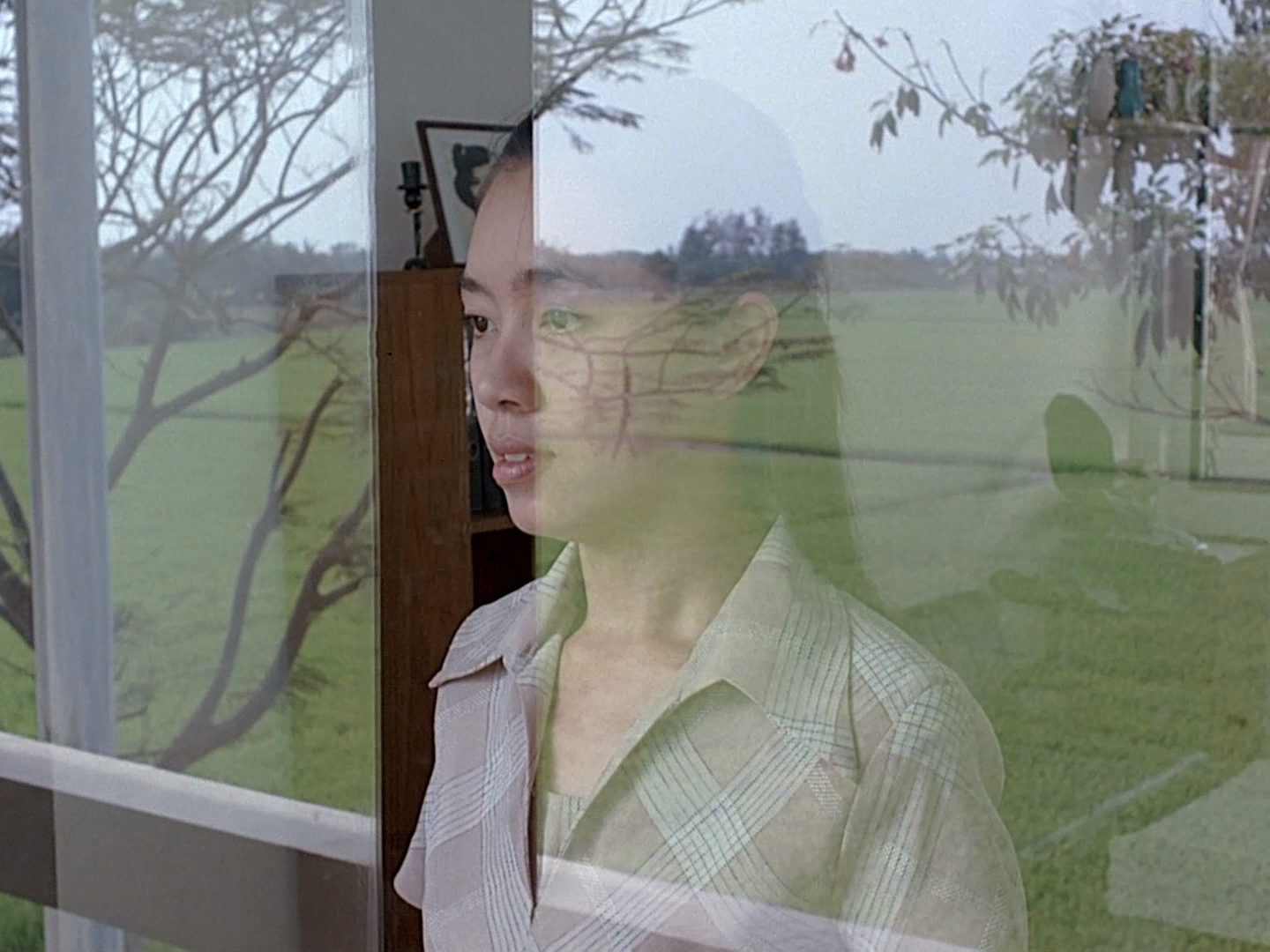
Syndromes and a Century is a film in two parts which sometimes echo each other. The two central characters are inspired by the film-maker’s parents, in the years before they became lovers. The first part focuses on a woman doctor, and is set in a space reminiscent of the world in which the film-maker was born and raised. The second part focuses on a male doctor, and is set in a more contemporary space much like the world the film-maker lives in.
EN
“Syndromes and a Century is a project that will explore how we remember, how our sense of happiness can be triggered by seemingly insignificant things. It is an experiment in recreating my parents’ lives before I was born, which also includes the lives of those who have touched me in the present day. It will be an in- terpretation of distant lives and of architectures that I remain fond of, along with contemporary ones that are around me. Time is collapsed to mimic a pattern of remembering and to manifest my belief in the idea of reincarnation. We are constantly reborn, amassing our karma, and we learn from our successive lives in order to one day finally experience a true happiness.”
From Apichatpong Weerasethakul’s pre-production notes1
Tony Rayns: The film’s English title is rather allusive. “Syndromes” suggests a concern with human behavior, while “a Century” suggests a concern with time. Is that how you saw it yourself?
Apichatpong Weerasethakul: Yes, this is the third film in which I’ve used the structure to explore dualities, and I think it will be the last. The word “Syndromes” could apply equally to Blissfully Yours or Tropical Malady: it does refer to human behavior, such as the way we fall in love. I don’t intend the word to have negative connotations; if falling in love is a kind of sickness, it’s one for which we all show symptoms. “Century” for me conveys the sense of moving forward. A century is more or less the same as a lifetime. I’m interested in the ways things change over time, and in the ways they don’t change. It seems to me that human affairs remain fairly constant.
Blissfully Yours was, for me, a film about cinema and the way I see it. Tropical Malady is more directly personal: it’s about me. And this film is about my parents. I feel that I’m achieving some kind of closure with this film, and the word “Century” somehow chimes with that.
[...]
Memory is the central impulse in your film-making?
It may well be the only impulse! Everything is stored in our memory, and it’s in the nature of film to preserve things … But I’ve never set out to recreate my memories exactly. The mind doesn’t work like a camera. The pleasure for me is not in remembering exactly but in recapturing the feeling of the memory – and in blending that with the present. That’s been especially true in this film. In Tropical Malady I was following a full script and trying to get things “right”. But this film is not really about me, and so (thanks to the generosity of my producers, who never objected) I had the freedom to build it bit by bit, day by day. We shot the first half first, then took a break and rough-cut the footage before shooting the second half. That helped very much to shape the rhythms in the second half, some of the dialogue and so on. We changed a lot in the second half in response to places we found while scouting for locations and little things that happened during the shoot. For example, the room full of prosthetic limbs was something we came across by chance, while scouting many hospitals. And the idea that the woman doctor would hide liquor in one of the prosthetic limbs was spontaneous, too. It came into the film at most a few days before we shot it.
Tony Rayns in conversation with Apichatpong Weerasethakul2
- 1Apichatpong Weerasethakul, cited in James Quandt, ed., Apichatpong Weerasethakul (Vienna: FilmmuseumSynemaPublikationen, 2009), 233-234.
- 2Tony Rayns, “Memories, Mysteries,” July 2006.

